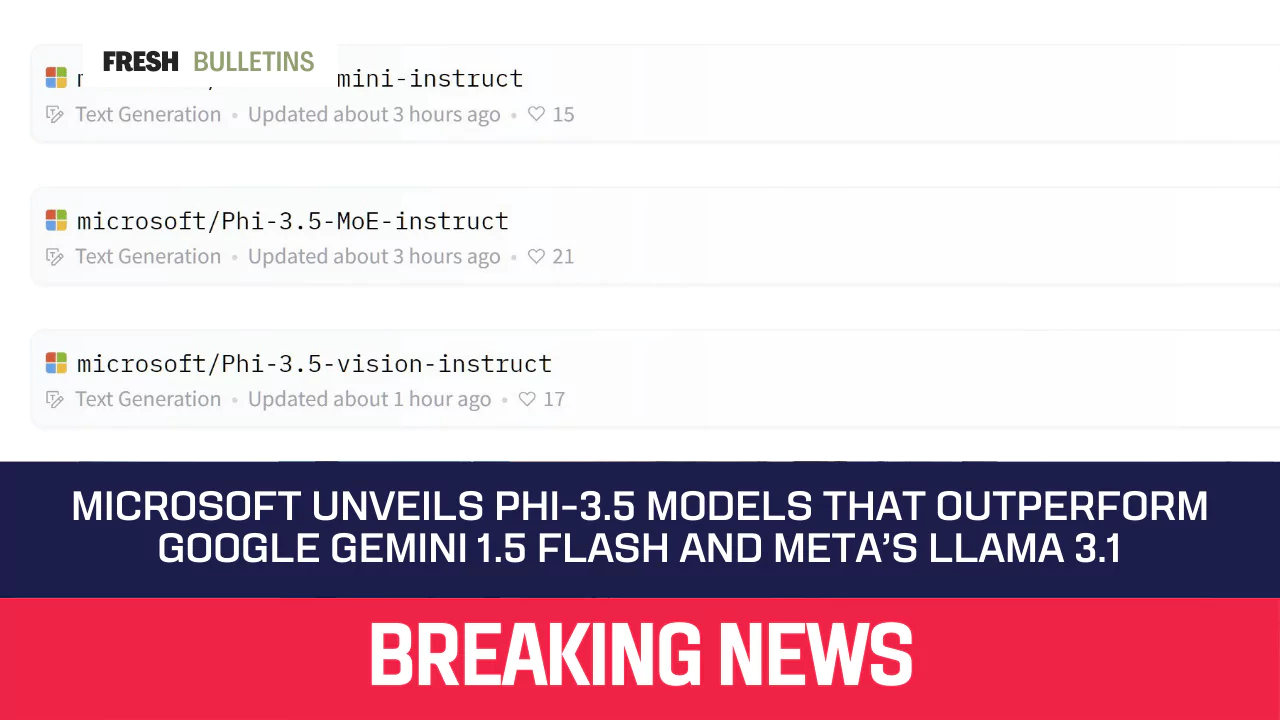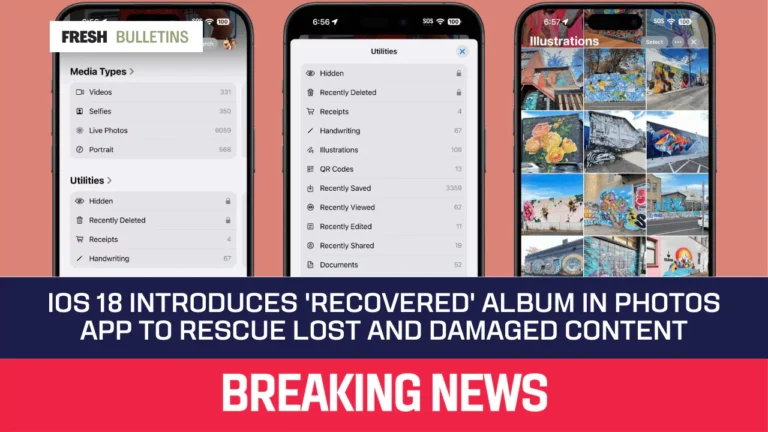Microsoft Unveils Phi-3.5 Models That Outperform Google Gemini 1.5 Flash and Meta’s Llama 3.1
Microsoft has introduced its new Phi-3.5 models, which are designed to outperform Google’s Gemini 1.5 Flash and Meta’s Llama 3.1 in various tasks.
Among these models, the Phi-3.5-MoE stands out, particularly in its reasoning capabilities. It ranks just behind OpenAI’s GPT-4o-mini, making it a robust choice for developers and researchers. This article explores the features, performance, and applications of these new models.
Overview of the Phi-3.5 Models
Microsoft’s Phi-3.5 models consist of three versions, each catering to different needs:
Each model boasts unique features tailored for specific tasks, from general reasoning to image analysis.
Phi-3.5-MoE-instruct
The Phi-3.5-MoE-instruct is the most advanced model, featuring 41.9 billion parameters. It is particularly good at handling complex reasoning tasks. This model utilizes 16 experts, activating two during each generation to perform various functions efficiently.
In benchmarks, Phi-3.5-MoE handles reasoning better than many larger models, including Llama 3.1 and Gemini 1.5 Flash. The model also supports multilingual applications, enhancing its versatility. It has a remarkable context length of up to 128,000 tokens, allowing it to process large passages of text easily.
The training of this model occurred over 23 days using 512 H100-80G GPUs, employing a dataset of 4.9 trillion tokens. Safety measures were integrated through supervised fine-tuning techniques to ensure reliability and responsiveness.
Phi-3.5-mini-instruct
The Phi-3.5-mini-instruct is a smaller alternative with 3.82 billion parameters. Although it is less powerful than the MoE version, it excels in lightweight applications. Its compatibility with a context length of 128,000 tokens makes it suitable for summarizing documents and retrieving information effectively.
This model processes tasks quickly and efficiently, outperforming larger models like Llama 3.1 and Mistral 7B on numerous benchmarks. It is ideal for settings where computational resources are limited, making it accessible to both commercial and academic users.
Phi-3.5-vision-instruct
The Phi-3.5-vision-instruct model is all about analyzing pictures and videos and has 4.15 billion factors. MMMU and MMBench, which are standards for visual tasks, show that it works well.
This model includes a unique architecture that combines an image encoder with a language model, allowing it to understand multi-frame images and issue descriptions based on visual content. Its dual capability to process text and images with a context length of 128,000 tokens enhances its utility in applications needing both text and visual inputs.
Performance Comparisons
The Phi-3.5 models have shown impressive results across various tests:
- Phi-3.5-MoE-instruct: Outperforms larger models in reasoning tasks. It shows exceptional performance in contexts involving code, mathematics, and general logic. While it trails only GPT-4o-mini, it maintains a strong edge over Gemini 1.5 Flash and Llama 3.1.
- Phi-3.5-mini-instruct: Offers an excellent balance between size and functionality, particularly in long-context tasks. It is adept at summarizing large texts without compromising performance.
- Phi-3.5-vision-instruct: Stands out in image processing capabilities, providing accurate analyses and summaries of visual information compared to existing models.
Accessibility and Open Source
One of the significant advantages of Microsoft’s Phi-3.5 models is their open-source nature. They are available under the MIT license on the AI platform Hugging Face. This decision facilitates widespread use, enabling developers and researchers to experiment with these tools without incurring high costs.
The open-access model encourages innovation, helping teams develop new applications in various fields, including education, healthcare, and business.
Applications of Phi-3.5 Models
These models can be applied in numerous areas:
- General AI Systems: Developers can create chatbots or virtual assistants built on the Phi-3.5 structure to provide better user interactions.
- Education: The models can tailor education tools to meet individual student needs, providing personalized reports and study questions based on performance.
- Content Creation: Users can leverage the video and image analysis capabilities to produce content that connects with audiences visually and textually.
- Programming Support: Phi-3.5 models can assist developers by offering coding recommendations, bug fixes, and writing assistance in multiple programming languages.





